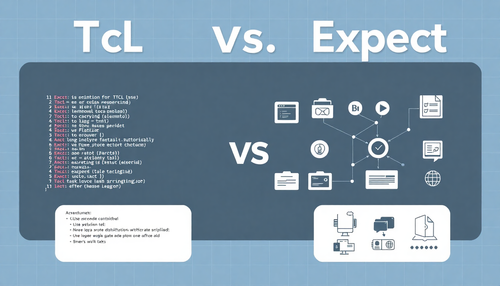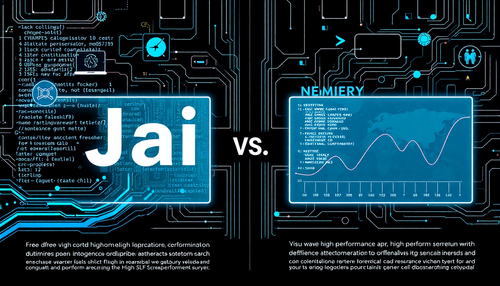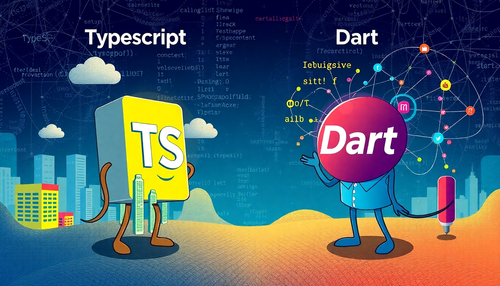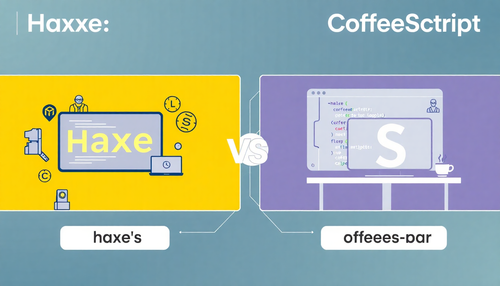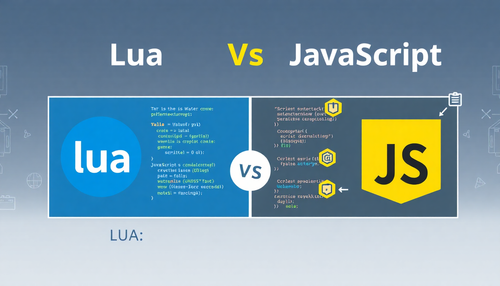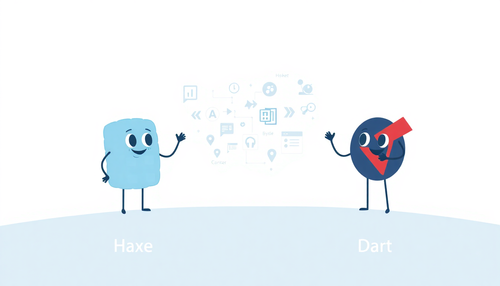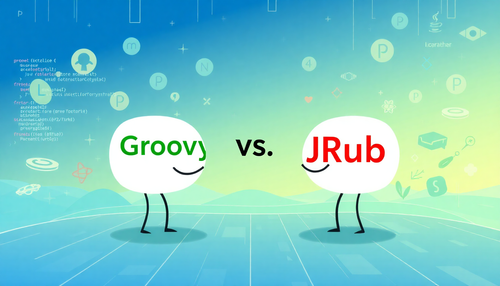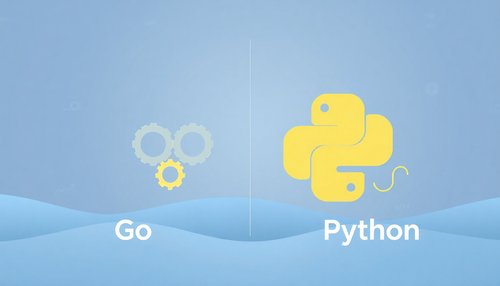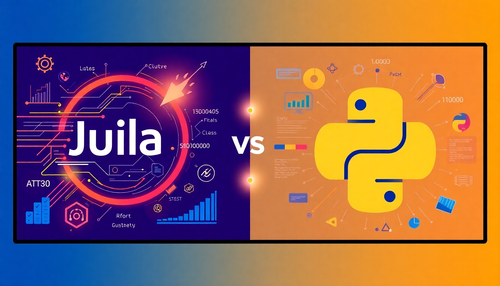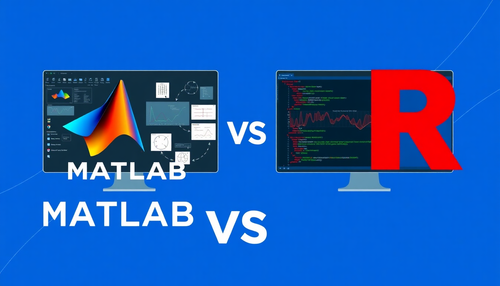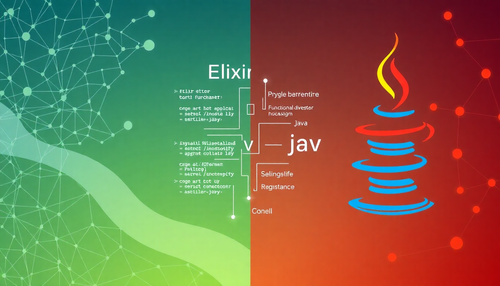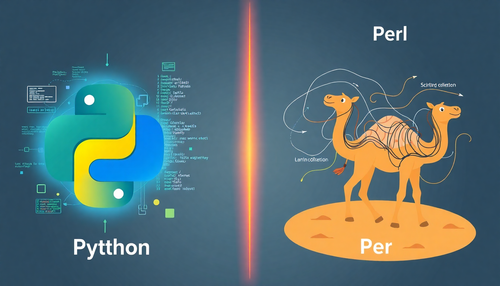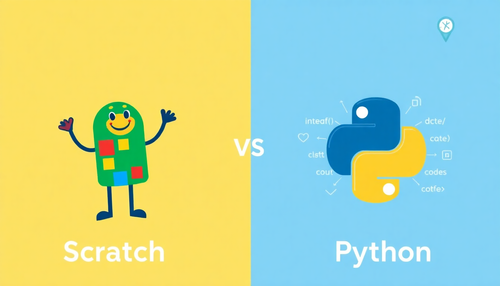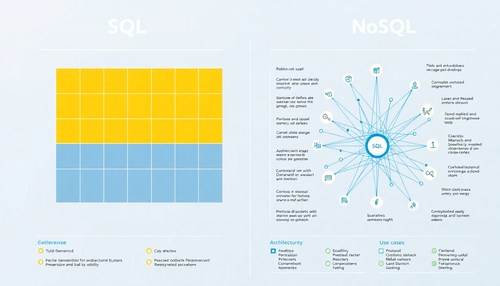Compare Anaconda and Python to determine which is the right choice for your data science projects. Learn more about its features and capabilities now.

Many developers and scientists wonder which one to choose between using Anaconda and Python. Both are popular tools in the world of data science and programming, but they serve different purposes. In this article, we will explain the main differences between Anaconda and Python and discuss when it is best to use each tool. We will also explore the advantages and disadvantages of each, how usage differs for machine learning, and the future prospects of these technologies. Let's start!
What is anaconda?
Anaconda is a Python distribution aimed at data scientists, statisticians, and researchers who use Python for scientific computing, data analysis, and machine learning. It provides a convenient and easy-to-use distribution of Python that includes a wide range of packages and tools for data science and machine learning, such as NumPy, Pandas, and Scikit-learn, which are commonly used in these areas. Anaconda's key features include:
- A package manager called Conda that makes it easy to install and manage third-party packages and dependencies.
- A collection of 1,500+ pre-built data science and machine learning packages, including popular libraries like NumPy, Pandas, and Scikit-learn.
- A graphical user interface called Anaconda Navigator that provides an easy way to launch applications and manage environments.
- A command-line interface called Anaconda Prompt, which allows users to access Conda and other command-line tools directly.
Anaconda is often used by data scientists, statisticians, and researchers, who can use it to manage their dependencies, install and update packages, and manage environments easily. It is available for Windows, macOS and Linux.
Advantages of Anaconda
Anaconda has many advantages that make it the best choice among data scientists and researchers. Some of the key advantages of Anaconda include the following:
- Package Management: Anaconda comes with a package manager called Conda, making it easy to install and manage packages and dependencies. This is particularly useful for data science and machine learning projects with many dependencies.
- Pre-built packages: Anaconda includes a large collection of pre-built packages for data science and machine learning, such as NumPy, Pandas, and Scikit-learn, that can be easily installed and updated. This can save time and effort for users who don't want to install and manage packages manually.
- Environments: Anaconda allows users to create and manage separate environments for different projects, which can help maintain separate dependencies and package versions and avoid conflicts.
- User-friendly: Anaconda Navigator and Anaconda Prompt provide a user-friendly interface and command-line tools for managing packages and environments, making it easier for users to start machine learning and data science projects.
- Community: Anaconda has a large community of users and developers, which means there is a wide range of resources and documentation available, including tutorials and forums, to help users make the most of the platform.
You can reap these advantages by learning or using Anaconda Development Services to boost your data science and machine learning initiatives.
Disadvantages of Anaconda
Despite the many advantages of Anaconda, there are also some disadvantages to using it. Some disadvantages may include the following:
- Large size: Anaconda comes with a large number of pre-installed packages, which can make the installation file quite large. This can slow down the download and installation and also take up more storage space on your computer.
- Slow performance: Since Anaconda comes with so many pre-installed packages, it can slow down your computer's performance, especially when running resource-intensive tasks.
- Compatibility issues: Some of the packages included with Anaconda may not be compatible with certain versions of Python or other packages. This can cause conflicts and make it difficult to run certain scripts or projects.
- Limited control: Since Anaconda comes with a predefined set of packages, users may not have full control over installed packages and versions. This can make it difficult to customize the distribution for specific needs.
- Limited package availability: Anaconda may not include the latest versions of certain packages or may not have certain packages required for your project.
- Extra configuration steps: If you are using Anaconda in a corporate environment, you may need to take extra steps to install it, such as getting permission from your IT department, and it may also require extra configuration steps to integrate it with other tools that you are using.
It is important to note that some of these disadvantages can be mitigated by using the Conda package manager to install and manage packages and environments properly to limit the impact on your machine's performance.
Which companies use Anaconda?
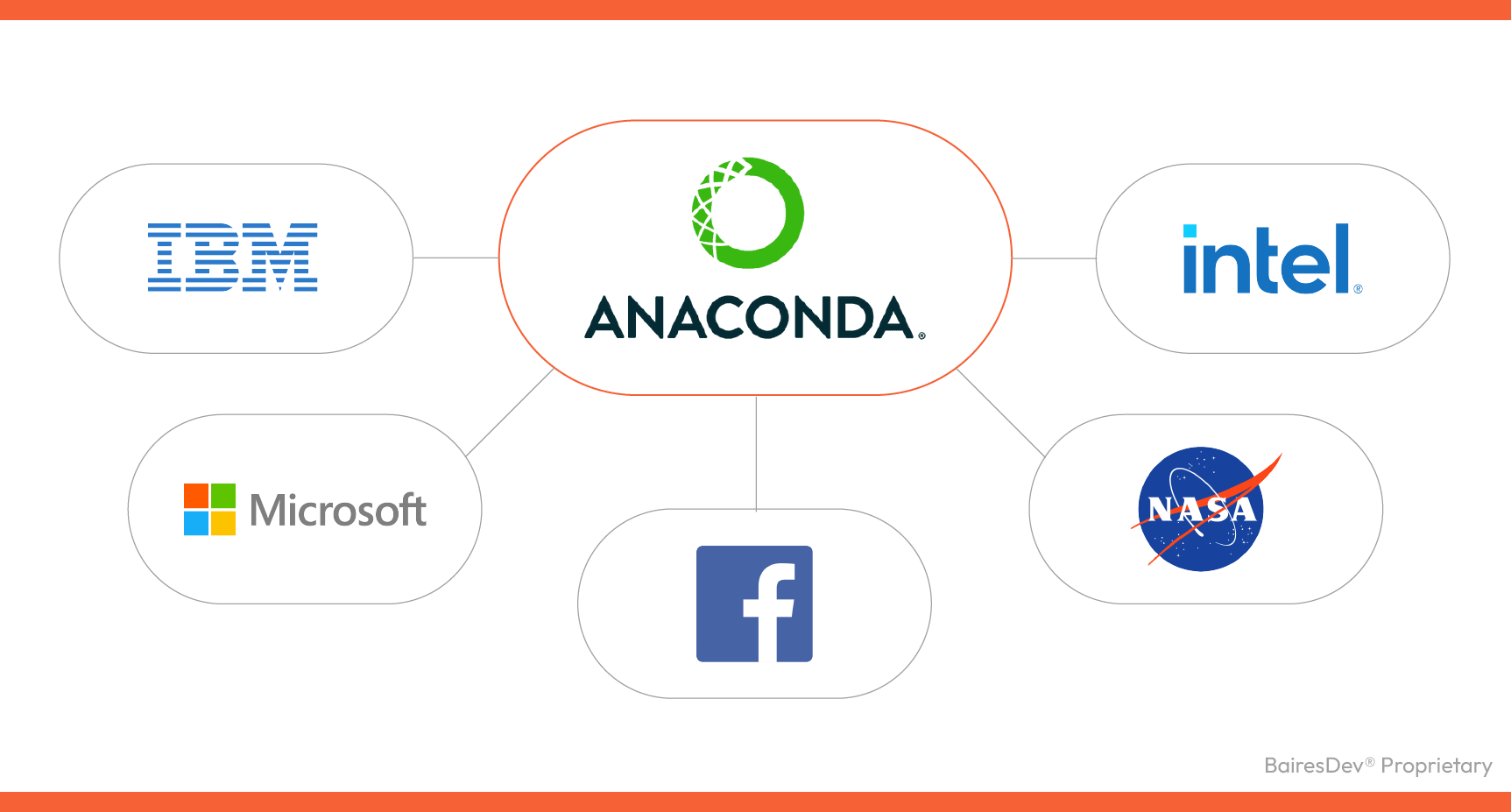
Anaconda is widely used by companies across different industries, especially those that rely on data science and machine learning. Here are some examples of companies using Anaconda:
- IBM uses Anaconda to power its IBM Watson Studio, a cloud-based platform for data science and machine learning.
- Microsoft uses Anaconda as the primary Python distribution on Azure Machine Learning, its cloud-based platform for machine learning and data science.
- Facebook uses Anaconda to manage dependencies and packages for machine learning and data science projects.
- NASA uses Anaconda to manage dependencies and packages for its data science projects, including projects related to earth science, planetary science, and heliophysics.
- Insights uses Anaconda to manage dependencies and packages for its data science and machine learning projects.
Anaconda is also used by many other companies, academic institutions, research organizations, and government agencies around the world for their data science and machine learning projects. The popularity of Python and the need for efficient data management and processing have led many organizations to adopt Anaconda in their workflows.
What tools integrate with Anaconda?
Anaconda integrates with a wide range of tools for data science and machine learning. Some examples of tools that integrate with Anaconda include these:
- Jupiter is a popular web-based open source notebook that allows users to share and create live code, equations, visualizations, and narrative text. It is included in the Anaconda distribution and can be launched from Anaconda Navigator.
- Spyder is an open source integrated development environment (IDE) for Python designed specifically for scientific computing and data analysis. It is included in the Anaconda distribution and can be launched from Anaconda Navigator.
- RStudio is a popular open source IDE for R programming language widely used by data scientists. It can be integrated with Anaconda by installing the r-essentials package.
- PyCharm is a popular integrated development environment (IDE) for Python that developers use widely. It can be integrated with Anaconda by configuring the Python interpreter to use the Anaconda distribution.
- Visual Studio Code is a popular open source editor that can be integrated with Anaconda by installing the Anaconda Extension Pack, which includes features such as IntelliSense, linting, and debugging.
- Quadro is a popular data visualization tool that can be integrated with Anaconda to visualize data from Jupyter notebooks or other data sources.
- Power BI is a popular data visualization tool from Microsoft that can be integrated with Anaconda to create interactive visualizations of Jupyter notebooks or other data sources.
These are just a few examples of tools that can be integrated with Anaconda. The flexibility of the Conda package manager and the popularity of Python make it easy to integrate with many other tools.
What is the Python programming language?
Python is a high-level, general-purpose programming language. It was launched by Guido van Rossum in 1991. Since then, it has become one of the most used programming languages in the world. It's easy to learn and can be used for many tasks such as web development, data analysis, artificial intelligence, scientific computing, and more.
Advantages of Python
Python is a powerful and widely used programming language that offers several advantages for developers and data scientists. Here are some of the main advantages:
- Easy to learn: Python is known for its simple and easy-to-learn syntax, which makes it a great language for programming beginners.
- Versatility: Developers and scientists can use Python for many tasks, including web development, data analysis, artificial intelligence, scientific computing, and more, making it a versatile language that can be applied to multiple domains.
- Large community: Python has a large and active community of users and developers, which means there is a wide range of resources and documentation available, including tutorials, forums, and libraries.
- Object Oriented: Python is an object-oriented programming language, which supports concepts such as classes and objects, facilitating the organization and reuse of code.
- Dynamic and interpreted: Python is a dynamic and interpreted language, which means that code is executed line by line instead of being compiled into machine code before execution. This allows for rapid prototyping and code testing.
- Many libraries and frameworks: Python has a variety of libraries and frameworks, including NumPy, Pandas, and Scikit-learn, that make it easier to perform complex tasks such as data analysis, machine learning, and web development.
Some other advantages of Python include the programming language has a large standard library that includes modules for various tasks, from working with data to connecting to web servers. It is open source and can run on multiple platforms, including Windows, macOS, and Linux. Python's simplicity, readability, and versatility make it the best choice for a variety of tasks, such as web development, data analysis, artificial intelligence, and scientific computing.
Disadvantages of Python
Python offers many advantages for developers and data scientists. However, like any programming language, it also has its own set of disadvantages. Let's dive into some of the disadvantages of the Python programming language.
- Speed: Python is an interpreted language, which means it can be slower than compiled languages like C or C++, especially when performing resource-intensive tasks.
- Mobile app development: Python is not a good choice for mobile app development as it is not as widely supported on mobile platforms as other languages like Java or Swift.
- Weak in memory management: Python, being a high-level language, lacks some control over memory management, which can lead to memory leaks and other problems.
- Database Access: Python's database access layer is a bit underdeveloped and primitive compared to other languages.
- Design constraints: Python's design philosophy emphasizes readability and simplicity, but this can constrain the design of large, complex systems.
- Not suitable for performance-critical tasks: Python is not suitable for performance-critical tasks such as video games or other high-performance applications.
- Implicit type conversion: In Python, the type of variable is determined by the type of value assigned to it, which can lead to implicit type conversion that can cause errors.
- Garbage collection: Python relies on garbage collection, which can lead to high memory usage and longer execution time in some cases.
It is important to note that many of these disadvantages can be mitigated by using libraries, frameworks, techniques, best practices, or Python development companies with Python experts.
Which companies use Python?
Python being a popular language, many companies and individuals use the programming language for applications, infrastructure, data science, and more. Below is a brief list of popular companies that use Python internally.
- Google uses Python for many of its web applications and system infrastructure, as well as for data analysis and machine learning.
- Netflix uses Python for data analysis, powering its recommendation system and automating many of its internal processes.
- Spotify uses Python for data analysis, machine learning, and backend services, as well as for its desktop and mobile apps.
- Dropbox uses Python for its server-side infrastructure, as well as for data analysis and machine learning.
- Facebook uses Python for its server-side infrastructure, data analysis, and machine learning, as well as open source tools and libraries.
- Uber uses Python for data analysis, machine learning, and to power its various internal systems and tools.
What tools integrate with Python?
Python is a versatile language that allows integration with different tools for different purposes. Some examples of tools that integrate with Python include the following:
- PyCharm is a popular integrated development environment (IDE) for Python that developers use widely. It has a built-in code editor and debugging tools, as well as support for version control systems like Git.
- Visual Studio Code is a popular open source editor that can be integrated with Python using the Python extension for Visual Studio Code, which includes features such as IntelliSense, linting, and debugging.
- Pytest is a popular testing framework for Python that makes it easy to write and run tests for your code.
- NumPy and SciPy are popular Python libraries for scientific computing and data analysis. They provide powerful tools for working with arrays, matrices and numeric operations.
- Pandas is a popular Python library for data manipulation and analysis. It provides powerful data structures and analysis tools like DataFrame and Series.
- Flask is a micro web framework for Python that is lightweight and easy to use.
- Selenium is a browser automation library that allows developers to automate browser actions such as clicking, scrolling, and filling out forms.
Anaconda vs. Python for Machine Learning
Anaconda and Python are powerful tools for machine learning, but they serve different purposes.
Anaconda is a Python and R programming language distribution designed specifically for scientific computing, data analysis, and machine learning. It includes many packages and tools commonly used in data science projects and has a package manager that makes it easy to install and manage dependencies and packages.
On the other hand, Python is a widely used programming language for machine learning applications, with many powerful tools for machine learning that have been developed and maintained by a large community of developers. With Python, you must gather and manage your own dependencies and packages for machine learning projects.
In short, Anaconda is a python distribution that provides an easy-to-use platform for data science and machine learning. It has many pre-installed packages and tools that are commonly used in these areas, and it also has a package manager that makes it easy to install and manage dependencies and packages. Python, however, is a general-purpose programming language that can be used for machine learning. Still, more effort is required to configure and manage the environment, and the libraries need to be installed separately.
Main differences between Anaconda and Python
| Criterion | Phyton | Anaconda |
|---|---|---|
| Year of Creation | 1991 | 2012 |
| The creator | Guido van Rossum | Continuous Analysis |
| Documentation | Python Docs | Anaconda Docs |
| Popularity | Growing interest. StackOverflow Search | Growing interest. Specific data is limited |
| Forms | Web Development, Data Science, Automation, AI | Data Science, Machine Learning, Scientific Computing |
| Performance | Generally slower than compiled languages | Performance depends on Python and included packages |
| Stability | Stable | Stability depends on specific packages, but overall stable |
| Learning curve | Moderate. Simple syntax but diverse standard library | Learning curve depends on Python, but also needs to manage packages |
| Community support | Great community. Python Forum ,StackOverflow etc. | It depends on the Python community. Anaconda Community , StackOverflow etc. |
| Development time | Varies depending on the project and developer experience | May be faster due to included science packages |
| Main advantages |
|
|
| Main disadvantages |
|
|
| Famous companies that use this technology | Google , Facebook , Spotify | IBM , Microsoft , JP Morgan |
| Cross-platform support | Yes, Python is cross-platform | Yes, Anaconda supports Windows, macOS and Linux |
Anaconda and Python are powerful tools for data science and machine learning, but they serve different purposes. Let's take a closer look at the key differences between Anaconda and Python, including their purpose, pre-installed packages and tools, application usage, ease of use, package management, and suitability for beginners. Understanding these differences can help you make an informed decision about which tool best fits your project and experience.
Exploring the Future: A Look Ahead
The future looks bright for both Anaconda and Python. Anaconda and Python are widely used in the areas of data science, machine learning, artificial intelligence, and scientific computing. Anaconda is expected to continue gaining popularity among data scientists and machine learning engineers, and Python is expected to grow and evolve, becoming even more powerful and versatile. The growing demand for data science, machine learning, artificial intelligence, and scientific computing will drive the continued growth and development of Anaconda and Python.
Anaconda x Python: who wins?
Anaconda and Python have their own strengths and weaknesses, and choosing between them ultimately depends on the specific needs of the project and the developer's experience.
Anaconda is a great option for beginners or beginners in data science and machine learning. It provides a comprehensive and easy-to-use platform for data science and machine learning, with many pre-installed packages and tools commonly used in these areas. It also has a package manager that makes it easy to install and manage dependencies and packages.
Python, however, is a general-purpose programming language widely used for machine learning tasks. It has many libraries and frameworks such as TensorFlow, Keras, PyTorch and Scikit-learn, which are powerful tools for machine learning, developed and maintained by a large community of developers. Python can be used in more complex projects, allowing more flexibility and control over the environment and packages.
In summary, Anaconda can be the right choice for beginners or those who are new to data science and machine learning. It provides a comprehensive and easy-to-use platform, while Python allows more flexibility and control over the environment and packages that can be used in more complex machine learning projects.
If you liked this article, check out one of our other Python articles.
- Anaconda vs Python Programming Explained with Differences
- 3 Skills Any Beginner Python Developer Should Have
- Best Python Debugging Tools
- 8 Best Python GUI Frameworks
- 8 Best Python Libraries for Data Science
Common questions
Is Anaconda necessary for all Python developers?
No, Anaconda is not necessary for all Python developers. It is particularly beneficial for those working in data science, machine learning, and scientific computing due to its pre-packaged libraries and tools, but it is not a requirement for general Python development.
Can I use Anaconda with Python versions other than the one it comes with?
Yes, you can use Anaconda with different Python versions. Anaconda allows you to create multiple environments, each with its specific version of Python and set of libraries, enabling flexibility in development.
Does Anaconda affect the performance of Python programs?
Generally, Anaconda does not significantly affect the performance of Python programs. It primarily acts as a package manager and an environment manager, and any performance differences would likely be due to the specific packages and libraries used rather than Anaconda itself.
Is Anaconda a good choice for Python programming beginners?
Yes, Anaconda can be a good choice for Python programming beginners, especially those interested in data science and machine learning. Its comprehensive package management and pre-installed libraries simplify the setup process and let beginners focus on learning Python.
Source: BairesDev








